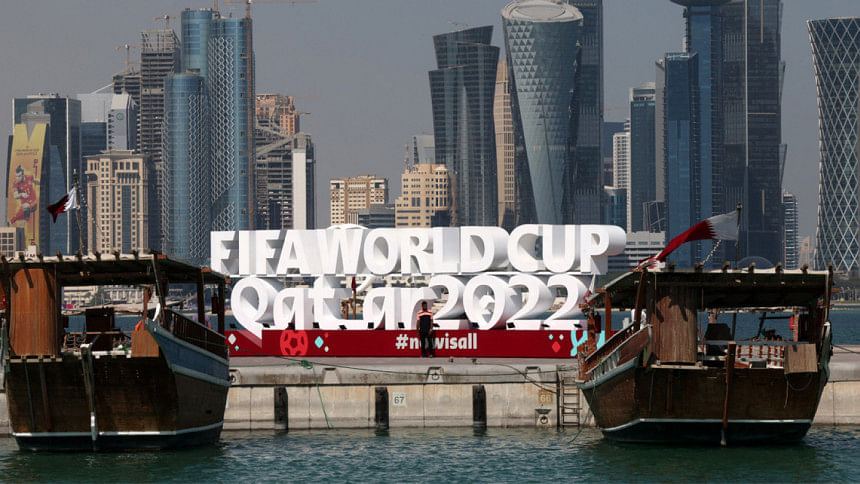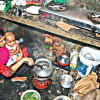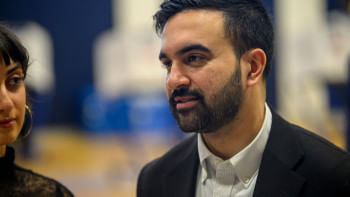Is Qatar FIFA World Cup really carbon neutral?

FIFA World Cup 2022 Qatar organisers have billed the event as the first carbon-neutral tournament in history. But critics say the claims are "misleading" to the public and warn that the competition poses a slew of other environmental problems from waste to water-use.
An investigation carried out by non-profit environment group Carbon Market Watch questioned the carbon-neutral label, saying organisers have likely dramatically underestimated emissions.
The tournament will emit some 3.6 million tons of CO2, according to official figures. That's roughly equal to the Democratic Republic of the Congo's annual emissions.
Most of those greenhouse gases will come from flights and accommodation for the more than one million visitors, as well as the construction of seven new stadiums, among other infrastructure, say organisers.
Qatar said it has cut planet-heating emissions by installing solar-powered lighting and cooling systems, and constructing "energy efficient stadiums." Emissions it can't avoid, it will offset with local green projects.

Stadium construction is one area where organisers got creative with their carbon accounting, underplaying emissions by at least 1.6 million tons, said Gilles Dufrasne, author of the Carbon Market Watch paper and policy officer at the Brussels-based NGO.
Organisers underestimated emissions from stadium construction
Only a small portion of construction emissions have been included in official estimates, as organisers say the stadiums will be used for other events. But the calculation ignores the fact that these stadiums would not have been built were it not for the World Cup, said Dufrasne and other researchers.
Qatar — a country of just 2.9 million people — claims the new stadiums will be repurposed for things such as a boutique hotel. But critics said the plans were ill-defined and pointed to abandoned Olympics sports venues in cities like Rio de Janeiro or Athens.
"You see story after story of communities that have built these venues and they become what we call white elephants — these big, embarrassing projects that are left over because nobody had any clue what to do with them afterwards," said Walker Ross, a researcher at the University of Edinburgh and the Sport Ecology Group, a network of academics looking at the interplay between sports and the environment.
What will happen to Qatar's world cup stadiums?
Building underutilised stadiums is particularly carbon intensive because of the highly specialised materials involved that often need to be sourced from far afield, Ross added.
Some 51% of emissions will come from transport, according to official estimates. But that doesn't include the shuttle flights set to ferry spectators into the desert city each day, said Dufrasne. Because of a shortage of accommodation in Qatar, 160 flights a day will take off from neighboring countries, including Kuwait, Oman, Saudi Arabia, and the United Arab Emirates.
The Carbon Market Watch analysis also criticised plans to offset these "unavoidable" emissions from transport and other areas, questioning their legitimacy.
Only about 200,000 of the planned 1.8 million tons of credits have been issued. They all come from renewable energy projects in Serbia, Turkey and India through an organisation more or less established by Qatar itself, according to the report.
Best practice would normally have organisations purchasing credits under internationally recognised and independent standards, said Dufrasne.
Environmental groups like Greenpeace question the idea of offsetting altogether.

"It does not work," said Julien Jreissati , programme director at Greenpeace Middle East and North Africa. "This whole idea of offsetting is merely a distraction away from real climate action, which is reducing fossil fuel-based emissions at the source as fast as possible."
Water use and waste at the world cup
Emissions aren't the only environmental concern posed by a mega sporting event like the World Cup. Water use is another, and especially concerning given Qatar's scarce water resources, said Jreissati.
Each pitch reportedly requires around 10,000 liters (2,641 gallons) of desalinated water each day in winter alone, added Jreissati.
Most of Qatar's fresh water comes from desalination plants produced in an energy-intensive process that uses mainly fossil fuels. The plants also release salty, hot brine that is toxic to marine life back into the sea.
Waste is another problem area, said Jreissasti. Event organisers say 60% of the waste generated during the event will be recycled, while 40% will be turned into energy. But burning waste for energy releases greenhouse gases, Jreissasti said.
"It's a big missed opportunity to create the first zero-waste competition or nearly zero-waste competition. That would have been ambitious," Jreissati said.
Can major sporting events like the World Cup ever be sustainable?
Almost all mega sporting events have an impact on the environment, with the 2018 World Cup in Russia releasing more than 2 million tons of CO2 and the 2016 Olympics in Rio emitting 4.5 million tons, although comparing different events is very tricky. The Qatari tournament deserves extra scrutiny because organizers are parading the carbon-neutral message, said Dufrasne.
"FIFA and the Qatari organizers made the decision — which they did not have to — to make a green campaign out of it and say it's carbon neutral. And that's where things got problematic for us," said Dufrasne.
Environmentalists say this World Cup is another missed opportunity to reassess the structure of the games and to trigger a fundamental change.
"The World Cup and such events should actually be events where you engage in a real systemic transformation. Because it brings so much attention, it brings so much investment, it creates a momentum," said Jreissati.
One example of change would be to use the event as an impetus to build a rail network between Gulf countries and host the event across the region. Others say it could be held without spectators, as was the Tokyo Olympics.
Another idea is to use the vast audience that sporting events generate to carry a message of sustainability around the world.
Athletes are the "most influential people on the planet" who have been leaders on a myriad of social causes, according to Lewis Blaustein, founder of EcoAthletes, an organisation that helps athletes use their platform to campaign for action on climate change.
He cited the opening ceremony of the 2016 Rio Olympics, which featured a seven-minute climate-themed vignette that was broadcast to about a billion people. "You have to get them to care about climate change and then to figure out how to get them to take action," said Blaustein.

 For all latest news, follow The Daily Star's Google News channel.
For all latest news, follow The Daily Star's Google News channel. 








Comments